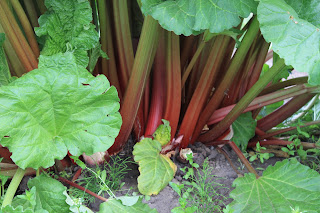This year is my first attempt at growing broccoli. I planted four plants and they all survived after being transplanted. Two plants are large and the other two are quite small and stunted. I don’t really know why two are stunted and the others are fine; they are grown side by side and get the same amount of sun and water. The only thing I can think of is they got frozen when it snowed in the beginning on June. After the snow the two small ones had leaves turn pink & purple (they were frozen) and they never seemed to recover. They are still alive, just not growing at the same rate as the others. Due I dare say that maybe the grubs are eating them too!
When I first started talking about trying some broccoli plants in the garden I was told by multiple people that broccoli was hard to grow because it attracts lots of bugs and caterpillars. Apparently the little worms that you get in radishes and turnips can be found it broccoli florets – gross! I’ll have to keep a close eye on the florets as they develop and keep a light dusting of DE on them and their leaves in an attempt to keep pests away. DE to the rescue again… hopefully.
Anyway, one large and one small plant have started to grow florets and I thought I would share this exciting news with you!























